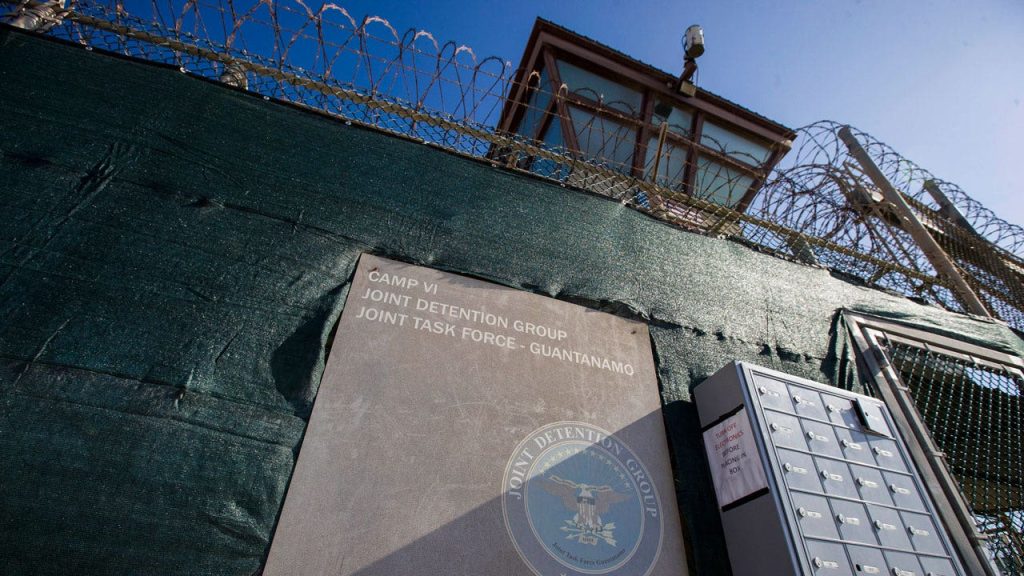The Biden administration orchestrated the transfer of 11 Yemeni detainees from the Guantanamo Bay detention facility to Oman, marking a significant step towards reducing the population of the controversial military prison. These detainees, captured in the aftermath of the 9/11 attacks, had been held for over two decades without charges or trial. The transfer, part of a long-term effort to eventually close Guantanamo, underscores the administration’s commitment to responsibly address the legal and ethical complexities surrounding the detention facility. Oman’s willingness to accept and resettle the detainees highlights the importance of international cooperation in resolving the enduring legacy of Guantanamo. The Defense Department expressed gratitude for Oman’s partnership and emphasized the ongoing efforts to responsibly reduce the detainee population.
Among the transferred detainees were individuals with alleged ties to Osama bin Laden, including two former bodyguards. Ahmed al-Alwi, purportedly part of bin Laden’s security detail in Afghanistan, had been flagged in declassified documents for maintaining an extremist mindset. Suhayl Abdul Anam al Sharabi, another alleged bodyguard, was identified in a 2020 declassified file as having trained in Afghanistan before 9/11 and potentially linked to a planned hijacking similar to the 9/11 attacks. The presence of such individuals among the transferred detainees raises questions about the potential security implications and the thoroughness of the vetting process preceding their release.
The transfer operation, conducted secretly in the early morning hours, coincided with the scheduled guilty plea of Khalid Sheikh Mohammed, the alleged mastermind of the 9/11 attacks. Mohammed’s plea deal, which involves a life sentence in exchange for avoiding the death penalty, has drawn sharp criticism from Republicans and families of 9/11 victims. The timing of the transfer, just days before this highly sensitive legal proceeding, suggests a possible connection between the two events, though the administration has not explicitly confirmed any link. The transfer had been planned for several years but faced delays due to congressional opposition, indicating the political complexities surrounding the Guantanamo issue.
The decision to transfer the detainees to Oman, a key U.S. ally in the Middle East, raises questions about the specific arrangements made with the Omani government and the considerations that led to the selection of Oman as the host country. Authorities have not disclosed the details of the agreement with Oman or the specific support provided to facilitate the resettlement of the detainees. The transfer includes Shaqawi al Hajj, who had engaged in repeated hunger strikes and required hospitalization during his 21 years of detention, highlighting the challenging conditions at Guantanamo and the ongoing debate about the humane treatment of detainees.
This transfer significantly reduces the Guantanamo population to just 15 detainees, the lowest number since 2002, the year the facility was established to house individuals captured in the “War on Terror.” The remaining detainees comprise six individuals never charged, two convicted and sentenced inmates, and seven others facing charges related to the 9/11 attacks, the USS Cole bombing, and the Bali bombings. The majority of the Guantanamo detainees are from Yemen, a country grappling with a devastating war and the influence of Iran-backed Houthi rebels. The complex political landscape of Yemen further complicates the process of repatriation and resettlement for Yemeni detainees.
The transfer of these 11 Yemeni detainees represents a complex and multifaceted development in the ongoing saga of Guantanamo Bay. It reflects the Biden administration’s efforts to address the legacy of the detention facility while navigating the legal, political, and security considerations surrounding the detainees. The transfer also highlights the crucial role of international cooperation in seeking solutions for the remaining detainees and ultimately achieving the closure of Guantanamo. The long-term implications of this transfer, both for the detainees and for U.S. foreign policy, remain to be seen.

